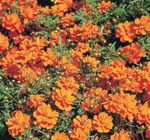Cosmos Brings Beauty to Your Universe
go.ncsu.edu/readext?235959
en Español / em Português
El inglés es el idioma de control de esta página. En la medida en que haya algún conflicto entre la traducción al inglés y la traducción, el inglés prevalece.
Al hacer clic en el enlace de traducción se activa un servicio de traducción gratuito para convertir la página al español. Al igual que con cualquier traducción por Internet, la conversión no es sensible al contexto y puede que no traduzca el texto en su significado original. NC State Extension no garantiza la exactitud del texto traducido. Por favor, tenga en cuenta que algunas aplicaciones y/o servicios pueden no funcionar como se espera cuando se traducen.
Português
Inglês é o idioma de controle desta página. Na medida que haja algum conflito entre o texto original em Inglês e a tradução, o Inglês prevalece.
Ao clicar no link de tradução, um serviço gratuito de tradução será ativado para converter a página para o Português. Como em qualquer tradução pela internet, a conversão não é sensivel ao contexto e pode não ocorrer a tradução para o significado orginal. O serviço de Extensão da Carolina do Norte (NC State Extension) não garante a exatidão do texto traduzido. Por favor, observe que algumas funções ou serviços podem não funcionar como esperado após a tradução.
English
English is the controlling language of this page. To the extent there is any conflict between the English text and the translation, English controls.
Clicking on the translation link activates a free translation service to convert the page to Spanish. As with any Internet translation, the conversion is not context-sensitive and may not translate the text to its original meaning. NC State Extension does not guarantee the accuracy of the translated text. Please note that some applications and/or services may not function as expected when translated.
Collapse ▲
Cosmos bipinnatus
Robert E. Lyons ©
Cosmos is an easy-to-grow flower that can reseed itself and grow in hot, dry conditions, making it a good choice for North Carolina gardens. Homeowners can find the two most common species of cosmos by asking their local suppliers for Cosmos sulphureus which will have golden-yellow or orange flowers and Cosmos bipinnatus with a variety of maroon, pink, lavender and white flowers. Gardeners can take advantage of the naturally smaller growing Cosmos bipinnatus varieties such as ‘Gloria’ pink, ‘Versailles Tetra’ red, ‘Candy Stripe’ white with red veins, ‘Day Dream’ white with red halo around yellow stamens, ‘Picotee’ white petals with red margins, ‘Sea Shells’ and ‘Dwarf Sensation Mix’, both sold as mixed colors usually in pink pastels, and ‘Psycho White’. Both cultivars may grow up to 6 feet depending on soil conditions and may need staking if subjected to high winds and frequent storms.
Plant cosmos in a location that receives at least a half day of direct sunlight. Sow the seeds outdoors after danger of frost is past and when the soil has warmed to at least 65 degrees. Rake seeds into a loose soil; planting seeds too deeply will hinder germination. Keep the soil moist for 5 to 10 days after seeding. Seeds will germinate in 7 to 21 days. Cosmos needs only basic care to provide an abundance of colorful blooms all summer.

AAS Winner Cosmos ‘Cosmic Orange’
Robert E. Lyons ©
When the spring-planted cosmos appears to have an abundance of dried seed, do not remove the plants. Encourage re-bloom by cutting the plants back to 12 to 18 inches high. They will be back in bloom in a month and the seed that is cut off will fall to the ground, germinate in the hot soil and increase the density of your plant population and the eventual bloom display.
Each year, the JC Raulston Arboretum evaluates at least one cultivar in its trials area for annual plants. The ‘Cosmic’ series is the latest entry into this arena and is both dwarf in stature and quick to go to seed. When you visit the trials, take a look at the adjacent Perennial Border for the original species of Cosmos sulphureus towering over most other plants with its cascading sprays of orange flowers.
David Barkley


